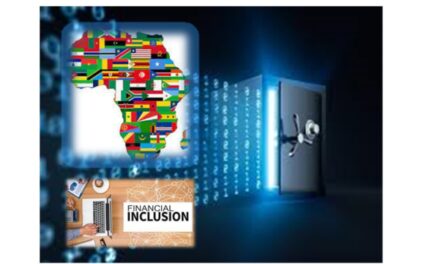Young adults are gaining easier and earlier access to credit with new products such as Buy Now Pay Later, but may not be getting to grips with the consequences
Credit card penetration in Singapore is high: Credit Bureau Singapore says over 2.4 million unique entities or persons have more than four credit card accounts.
Credit is becoming widely available in Singapore, with a plethora of products offered from traditional unsecured credit cards to alternative lines such as Buy Now Pay Later (BNPL).
Yet credit is something of a double-edged sword. It helps those with cash flow issues and rewards good repayment behaviour with better interest rates for loans. It’s also an easy way to rack up crushing debt with long-term consequences for future financial decisions such as buying a home.
Statistics from Credit Bureau Singapore (CBS) shows that 82 per cent of the 512,084 new credit applications in the fourth quarter of 2022 were for credit cards, with the rest for personal, real estate, motor vehicle loans and overdraft facilities.
Out of Singapore’s population of 5.6 million people, there are 3.4 million unique entities or persons in CBS’ system, said CBS, with 2.4 million of these having more than four credit card accounts.
 Demand for credit is noticeably rising in the youngest demographic. “We see a strong interest from youths aged 21-30 in taking up credit cards, evidenced by a 20 per cent growth in customers in this category when comparing 2019 to 2022 figures,” said Anthony Seow, head of payments and platforms, DBS.
Demand for credit is noticeably rising in the youngest demographic. “We see a strong interest from youths aged 21-30 in taking up credit cards, evidenced by a 20 per cent growth in customers in this category when comparing 2019 to 2022 figures,” said Anthony Seow, head of payments and platforms, DBS.
CBS’s data further shows that in the 21-29 year old demographic, the average amount charged to a credit card rose from S$2,336 to S$2,484 between Q3 2022 and Q4 2022. This number is slightly higher than Q4 2018, which saw the same demographic spend an average of S$2,480.
Across the board, all age ranges increased their credit card spend between Q3 2022 and Q4 2022 between 4.9 per cent to 7.3 per cent, with only the 50-55 age group’s increase lower than the 21-29 age group increase of 6.3 per cent.
Alternative credit products, marketed as easily available without strict credit checks and income requirements, have also sprouted since coming on the scene in 2017. BNPL platforms allow users to pay off a purchase in three or four interest-free instalments, pushing exposure to credit to a younger segment of users aged 18 and above. The industry has recently instituted a code of conduct and restricted users to a S$2,000 limit on each platform.
 “BNPL offers easier access to ‘ready’ credit for smaller amounts that can be approved quickly over a smartphone app. Such convenient means of applying for credit open up credit availability to a wider demographic, especially young, non-working individuals who do not qualify for traditional loan products,” said assistant professor Gordon Tan from Singapore University of Technology and Design (SUTD).
“BNPL offers easier access to ‘ready’ credit for smaller amounts that can be approved quickly over a smartphone app. Such convenient means of applying for credit open up credit availability to a wider demographic, especially young, non-working individuals who do not qualify for traditional loan products,” said assistant professor Gordon Tan from Singapore University of Technology and Design (SUTD).
The credit industry is also looking to expand into segments that typically have issues getting favourable interest rates, with digital banks in Singapore, GXS and MariBank, targeting underserved segments.
 “In the coming months, we will be rolling out a flexible unsecured loan product that addresses the pain points experienced by underserved consumers today,” said Jenn Ong, head of credit products, GXS. “Similar to our GXS Savings Account, there are no fees tied to the product.”
“In the coming months, we will be rolling out a flexible unsecured loan product that addresses the pain points experienced by underserved consumers today,” said Jenn Ong, head of credit products, GXS. “Similar to our GXS Savings Account, there are no fees tied to the product.”
Could it turn ugly?
But with the earlier – and wider – exposure to credit comes a higher risk of default.
According to statistics from CBS, the 21-29 year old demographic is seeing an increase in late payments and defaults.
Latest data shows a 3 per cent increase in late payments of unsecured credit cards for the 21-29 age group – up to 2 per cent in Q4 2022, from 1.95 per cent in Q3 2022. Late payments have edged up every quarter since the start of 2022, increasing from 1.8 per cent in Q1 to 1.9 per cent in Q2, and then again to 1.95 per cent in Q3.
Default rates for the age group also creeped up from 0.07 per cent to 0.08 per cent in Q4. Default rates in the 35-39 age group (0.08 per cent), 45-49 age group (0.07 per cent) and 50-54 age group (0.06 per cent) also saw increases, inching up 0.01 per cent from Q3 to Q4 2022. The 30-35 age group remained steady at 0.08 per cent. Late payments for the 30-34 age group edged up from 2.96 per cent in Q3 to 3 per cent in Q4, while the 35-39 age group remained steady at 4.2 per cent.
The late payments for 40-44 age group (4.5 per cent), 45-49 age group (4.5 per cent), 50-54 age group (4.3 per cent) recorded declines of less than 0.1 per cent between Q3 and Q4.
Lowering the bar on access to credit has consequences in the long run for the younger demographic.
“This problem becomes more pronounced particularly when younger users of credit who become accustomed to using credit to pay for their purchases are unable to use credit responsibly, which includes keeping track of credit usage and repayments, as well as proper budgeting,” said SUTD’s Tan.
Overspending can quickly land a young person in a debt spiral, which impacts not just their fiscal situation, but their overall well-being as well.
“Studies have shown that greater indebtedness is more mentally taxing on individuals, which negatively affects their psychological and cognitive abilities and therefore impairs their decision-making capabilities,” said Tan.
For those who typically have a hard time obtaining credit or lending from banks, the issue is a little different. They end up turning to lenders who charge high rates, or illegal money lenders. This makes them susceptible to falling into a debt trap when an emergency arises or when there is a cash shortage and a loan is needed to bridge it, points out associate professor Pearpilai Jutasompakorn of Singapore Institute of Technology (SIT).
So easier access to funds for these underserved may not be as detrimental as extending easy credit to young spenders.
“In addition, without access to credit, it is difficult for the lower-income groups who run micro businesses to expand their business or solve cash flow problems. Therefore, financial inclusion is an issue that needs to be addressed,” she said.
SUTD’s Tan argues that the point isn’t whether the segment should or should not be given credit, but rather if credit is commensurate with the customers’ creditworthiness.
Here, digital banks could help with their tech tools. “For instance, they can use data analytics to better monitor the credit usage patterns to identify potential customers who are showing signs of irresponsible credit usage, or design their app interfaces in a way that presents credit-related information in easy-to-understand ways,” he said.
Neutrality of credit
 As a tool, credit is neither good nor bad, says Tan Huey Min, general manager at Credit Counseling Singapore (CCS).
As a tool, credit is neither good nor bad, says Tan Huey Min, general manager at Credit Counseling Singapore (CCS).
“It has its function to allow us to buy and enjoy the item before we have the full sum of money to purchase it,” said Tan.
There are guidelines governing some of the more easily available products. Unsecured credit cards have an annual salary requirement of S$30,000, and financial institutions can only allow customers to owe 12 times their monthly salary in unsecured credit. This limit has come down since 2015 when it was 24 times.
It is careless use of credit ending up in unpaid debt that lands consumers in trouble.
The numbers from CCS show an increasing percentage of under-30-year-olds seeking help over the years, from 11.9 per cent of clients in 2019 to 16.3 per cent in 2022. But in absolute numbers, the number of clients under 30 years old has actually fallen, from 388 in 2019 to 257 in 2022.
Responsible use of credit does help in the long run by building up a person’s credit history, as data coupled with models can predict to a high degree of certainty whether a person is a good or bad borrower.
While the amount of credit from BNPL players increased about four times, from S$114 million to S$440 million from 2021 to 2022, SIT’s Jutasompakorn notes that BNPL is only a drop in the ocean.
“BNPL remains a small part of consumer unsecured loans,” she said. “BNPL quantum in 2021 was only 1 per cent of credit card and debit card payments, and in 2022, it was 0.5 per cent.”
There are some who have eschewed credit for debit cards, such as Jane P. Hearing horror stories of others landing in debt has made the 31-year-old avoid credit cards.
“Not having access to a credit card also makes me consciously save towards my goals and question if I really need that purchase, trip or subscription … I’m a ‘late bloomer’ to finance, still learning about how I can make my money work for me,” she said.
Starting young
Learning how to budget and deal with credit are not subjects or topics that are normally taught in schools. Currently, there are a number of courses and workshops provided by external parties such as CCS, The Institute of Financial Literacy and MoneySense, an initiative by the Monetary Authority of Singapore and the Ministry of Manpower.
Citing the MoneySense Council’s 2017 Financial Planning Attitudes Survey, about one in four polled needed help with their money habits, says SIT’s Jutasompakorn.
“This group of participants were more likely to use credit for big-ticket items and less likely to save, have a budget, or track their spending,” she said.
Among those entering the workforce, graduates with different family and education backgrounds may also have less social experience and different levels of financial literacy.
More can and should be done to improve awareness as newer forms of credit become available. These can change generational perceptions towards debt, says SUTD’s Tan.
SIT’s Jutasompakorn believes that a hands-on course – such as a simulation game at the university level focused on risky credit behaviour – can be effective, as well as a course focusing on topics such as time value of money/compounded interest, budgeting, and debit/credit card management.
Tan adds that the younger generation may be viewing credit as a tool to enhance their lifestyle rather than a financial obligation that needs to be settled eventually, so a nuanced approach may  be needed.
be needed.
Source: businesstimes


























